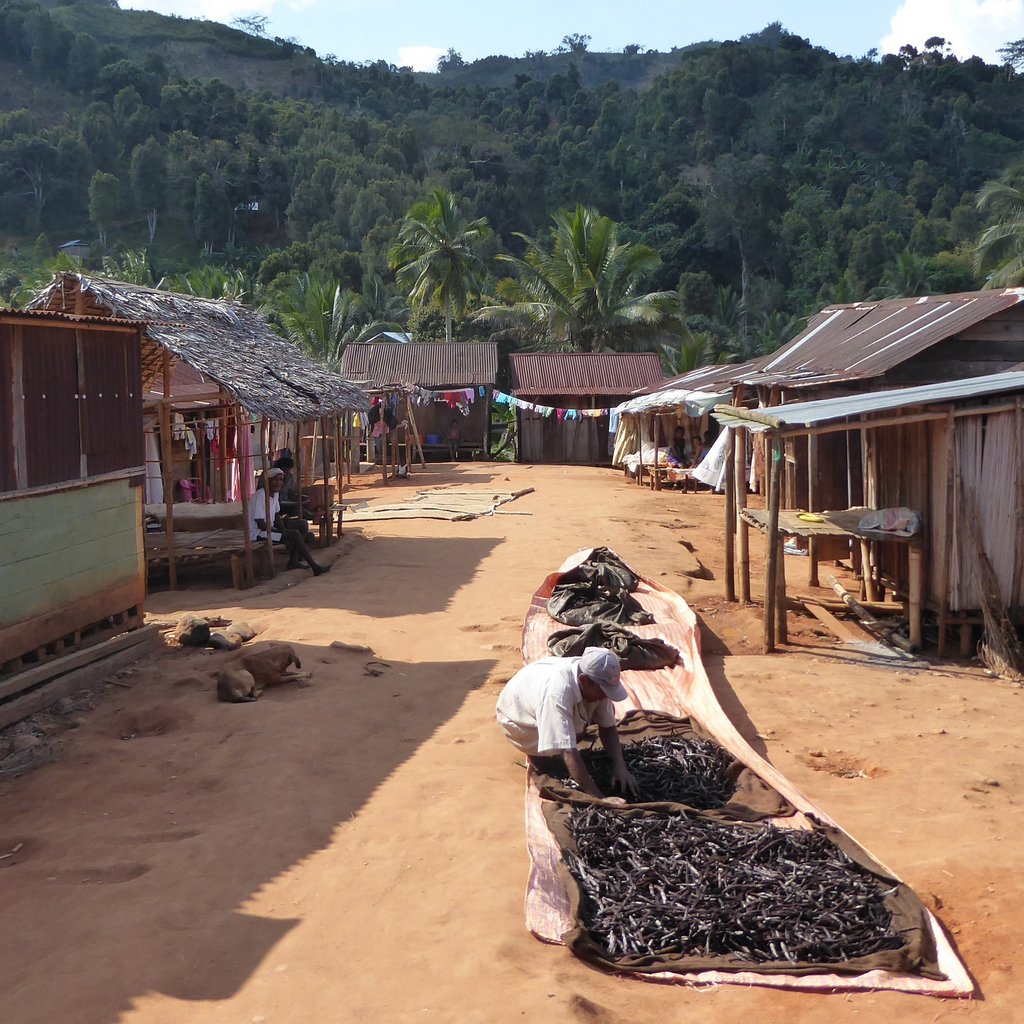Managing Telecoupled Landscapes in Madagascar
What do we see on the project photo?
A farmer is drying vanilla in a small village in north-eastern Madagascar. Vanilla is grown by smallholder farmers in agroforestry systems often combined with clove trees as shown in the background of the photo. Both vanilla and cloves are exported for international markets.
How would you explain to a child what the project is doing?
If you eat ice cream, it most likely contains vanilla from Madagascar. We wanted to find out how global dynamics, such as rising prices for vanilla, influence the landscapes and the lives of farmers in Madagascar. What are ways to protect forests while ensuring that local people can live a good life?
What is the project’s main objective?
The project seeks to develop and test innovative strategies that safeguard ecosystem services and the well-being of affected populations – especially where land use is subject to strong outside influences.
Why is the project important?
Madagascar is one of the world's most important biodiversity hotspots. But as prices for vanilla and cloves rise, cultivated areas are expanded, often at the expense of forests. Understanding and finding ways to balance such conflicts of interest is key for the region’s sustainable development.
What has been the most positive moment during the project?
Our team produced a video on vanilla as motor for sustainable development, which received a lot of positive response and even seems to have led to adaptations by the local government. We also trained pilot farmers in agricultural diversification and some of the techniques have already spread in the villages.
What have been the biggest challenges encountered in the project?
One challenge was to initiate a dialogue between villagers and international actors, as the villages are very remote and often lack internet access. Also, we aimed to follow the flows of goods and the actors involved, which was particularly challenging regarding large international companies and illicit flows.
Which is the most important lesson learnt from the project?
Through our research, we found just how strongly the global competition over land and resources impacts local development. For it to be sustainable, the various international and local actors must work together – for the benefit of all.
About the project
Title:
Managing Telecoupled Landscapes in Madagascar
Contact:
Julie Zähringer, project coordinator
Duration:
01.01.2015 – 30.06.2021
Funding institutions:
Swiss r4d programme (www.r4d.ch), funded by the Swiss National Science Foundation (SNSF) and the Swiss Agency for Development and Cooperation (SDC)
Implementing institutions:
Centre for Development and Environment (CDE), University of Bern; Planning of Landscape and Urban Systems (PLUS), ETH Zürich; Institute of Political Science (IPW), University of Bern; Ecole Supérieure des Sciences Agronomiques – Mention Foresterie et Environnement (ESSA-Forêts), Université d’Antananarivo
Further information:
Overall Project Website
Story Map
Policy Brief

